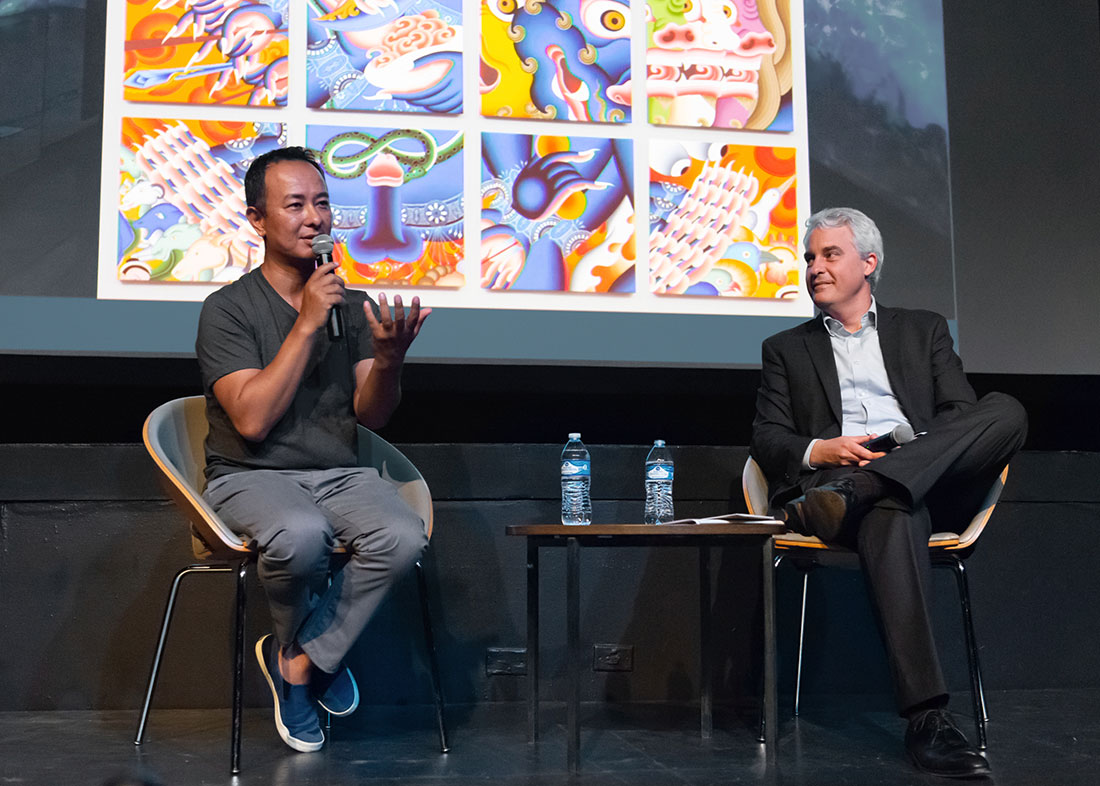
You can’t miss Awaken: A Tibetan Buddhist Journey Toward Enlightenment currently at the Virginia Museum of Fine Arts until August 18, 2019! The ten stages of the exhibition are designed to transform visitors as they take their own quest into spiritual understanding.
John Henry Rice, E. Rhodes and Leona B. Carpenter Curator of South Asian and Islamic Art, explains that there were three separate ‘aha’ moments that formed the foundation of the exhibit. Dr. Rice started with the idea that the VMFA sculpture known as Vajrabhairava or the Defeater of Death, a 15th century rendering of a Tibetan God, would play a central role. With 34 arms, 16 legs, a Buffalo head and 8 other heads, he [Vajrabhairava] represents Buddhist wisdom defeating death. Dr. Rice says, “He’s always been a crowd pleaser and I knew he had to be the star of the show.”
The second piece of the puzzle came from Dr. Rice’s collaboration with Dr. Jeffrey S. Durham, the Associate Curator of Himalayan Art with the Asian Art Museum of San Francisco. In one of numerous conversations about how to make this exhibit happen, Dr. Durham mentioned that the Asian owned a painted mandala that resembled a map. This mandala contained Buddhist teachings about mortality which are revealed in four stages of the journey. Vajrabhairava, the sculpture owned by the VMFA, was in the center of this map and his wrath is directed at enemies of enlightenment. This find provided another building block to creating a framework for the show.
The trifecta occurred when Dr. Rice was looking through an art dealer’s catalogue and saw a painting called Luxation 1 by Tsherin Sherpa, a Nepalese- born artist. Rice says, “I kept looking at the painting and I realized that this is our guy [Vajrabhairava] all chopped up. This is it! It takes us from the present and provides the bridge back in time.”
Tsherin had no idea that his painting was going to be displayed so prominently in Awaken. He says, “I was stunned because I was just happy that the VMFA had acquired my work.” He adds, “I come from a family of traditional Buddhist painters.” Through years of study in Nepal and the United States, he broke from historical convention by adding contemporary elements to his paintings. Tsherin wants his work to be fluid and he sees himself as a bridge between the past and the present.
As visitors walk into the first gallery, they are greeted by Tsherin’s Luxation 1, that depicts the god Vajrabhairava painted in 16 separate squares. In Luxation 1, Tsherin explored the idea of movement during his creative process. He describes looking at a kaleidoscope and focusing on one piece at a time. The use of the squares is a unique way to make this god appear contemporary. In the show, this painting is used to represent the chaos of the human mind and the ultimate need for enlightenment. Tsherin Sherpa inspires us to look at traditional Buddhist artwork with a fresh lens.
From sacred Buddhist objects to Tsherin’s stunning contemporary paintings, this compelling exhibition engages us in a new and exciting way!